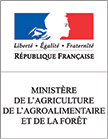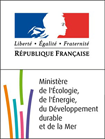
I’ve been running a small social enterprise in the areas of biodiversity, natural capital and ecosystems over the last few years. In this capacity I work on a day-to-day basis in different landscapes.
Just to give you some insight in the diverse array of projects we do; we are currently involved in projects such as:
- large-scale ecosystem restoration in Kenya;
- finding new financing mechanisms to create new natural reserves in the Netherlands;
- creating new supply chains of NTFPs in Ghana;
- setting-up a Natural Capital Academy;
- setting-up Payment for Ecosystem Schemes in the Dutch dairy industry;
- testing a “subsidy-free” alternative to agro-environmental schemes;
- helping business to integrate biodiversity into their supply-chains;
As you may have observed, this is a very wide range of projects. However, what they all have in common, is natural capital and biodiversity. Something that we try do in all our projects, is to approach nature as a value-base, not as a cost-base. Often, the environment is looked upon as a cost-base, whether its in business, urban planning or agriculture. While in fact, nature is the basis of our existence.
Functioning ecosystems are a prerequisite for humans in order to thrive, both socially and economically. To address this, we calculate the benefits of the ecosystem services within our projects. We quantify and monetize as much as we can. Not because we want to dismiss the intrinsic value of nature and look at it as a commodity, but because if we do not show the enormous value of nature, before we know it the value of natural in the economic systems is set at zero.
While working on these projects, before you know it you are working with landscapes, in landscapes and with a landscape approach. So what is a landscape for us? Our ideal landscape is formed by a mosaic of three interdependent zones: a natural zone, which is basically nature’s playground; a mixed-zone, which serves as a buffer zone but also allows for high-value, low-intensity crops or for example recreational activities; and finally a more intense zone, either with agriculture, or of course an urban system.
These three zones together allow for a sustainable future where our current needs are met, without compromising the needs of future generations. We hope to show the value of nature for our intensifying urban and agricultural systems, because we strongly believe that without nature, we are destroying our planet and dooming our prosperity.
Daan Jochem Groot is one of the 10 young champions who will work on the “ Landscape restoration” challenge with Youth program’s partner: WLE (CGIAR).
Learn more about the Global Landscapes Forum’s Youth program, meet our 50 youth champions and discover the 5 Landscapes challenges they will take up, in December, in Paris.




































